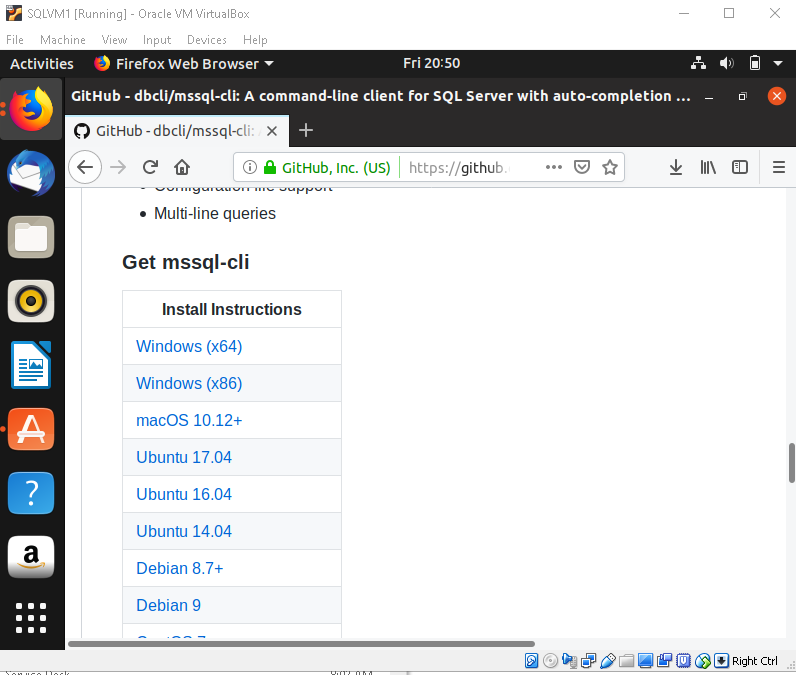There is another way you can install and lock the version of CLI. Say you want to install 2.0.38 on Ubuntu 16.04: sudo apt-get install -y azure-cli=2.0.38-1xenial echo azure-cli hold sudo dpkg -set-selection sudo apt-get upgrade -y.
- Download and install ACS Engine; JQ. Download and install JQ; Visual Studio. Will be used for editing and executing web and load tests. There's an option to run the tests locally or in the cloud through VSTS. Web and load tests examples found here. Download and install Visual Studio; Deploying Azure Resources and ACS Kubernetes Cluster.
- This will download and install the latest version of the Azure CLI for Windows. If you already have a version installed, the installer will update the existing version. After the installation is complete, you will need to reopen PowerShell to use the Azure CLI. Azure CLI Command (for update only).
- If you want an entirely cross-platform tooling that will work exactly the same on Mac, Linux, and Windows, use the Azure CLI. In general, the Azure CLI tends to be shorter, easier to remember commands, and it is much easier to pick up this language than PowerShell. The PowerShell commands can get quite lengthy. As a note, both PowerShell.
I blogged about the Windows Azure cloud a few weeks ago. I'm digging the new stuff and trying different scenarios on Macs, PCs and Linux (I prefer Ubuntu). As a long time PowerShell and Command Line fan I'm always looking for ways to do stuff 'in text mode' as well as scripting site creations and deployments. Warcraft 2 download mac free.
Turns out there are a mess of ways to access Azure from the command line - more than even I thought. There's a JSON-based Web API that these tools end up talking to. You could certainly call that API directly if you wanted, but the command line tools are damn fun.
You can install the Mac Azure SDK installer to get the tools and more on a Mac, or if you install node.js on Windows or Mac or Linux you can use the Node Package Manager (npm) to install Azure tools like this:
You can also use apt-get or other repository commands. After this, you can just run 'azure' which gives you these commands that you link together in a very intuitive way, 'azure topic(noun)verb option' so 'azure site list' or 'azure vm disk create' and the like.



There's even ASCII art, and who doesn't like that. ;)
Seriously, though, it's slick. Here's a sample interaction I did just now. I trimmed some boring stuff but this is starting from a fresh machine with no tools and ending with me interacting with my Windows Azure account.
Here's how I can create and start a VM from the command line. First I'll list the available images I can start with, then I create it. I wait for it to get ready, then it's started and ready to remote (RDP, SSH, etc) into.
That's the command line tool for Mac, Linux, and optionally Windows (if you install node and run 'npm install azure --global') and there's PowerShell commands for the Windows admin. It's also worth noting that you can check out all the code for these as they are all open source and up on github at http://github.com/windowsazure. The whole command line app is written in JavaScript, in fact.

Just as the command line version of the management tools has a very specific and comfortable noun/verb/options style, the cmdlets are very 'PowerShelly' and will feel comfortable folks who are used to PowerShell. The documentation and tools are in a Preview mode and are under ongoing development, so you'll find some holes in the documentation.
Azure Cli Download Command
The PowerShell commands all work together and data is passed between them. Here a new Azure VM configuration is created while the VM Name is pull from the list, then the a provisioning config object is passed into New-AzureVM.
Next, I want to figure out how I can spin up a whole farm of websites from the command line, deploy an app to the new web farm, configure the farm for traffic, then load test it hard, all from the command line. Such fun!
Sponsor: I want to thank the folks at DevExpress for sponsoring this week's feed. Check out their DXperience tools, they are amazing. You can create web-based iPad apps with ASP.NET and Web Forms. I was personally genuinely impressed. Introducing DXperience 12.1 by DevExpress - The technology landscape is changing and new platforms are emerging. New tools by DevExpress deliver next-generation user experiences on the desktop, on the Web or across a broad array of Touch-enabled mobile devices.
About Scott
Scott Hanselman is a former professor, former Chief Architect in finance, now speaker, consultant, father, diabetic, and Microsoft employee. He is a failed stand-up comic, a cornrower, and a book author.
Azure Cli Download Mac Mojave
AboutNewsletter